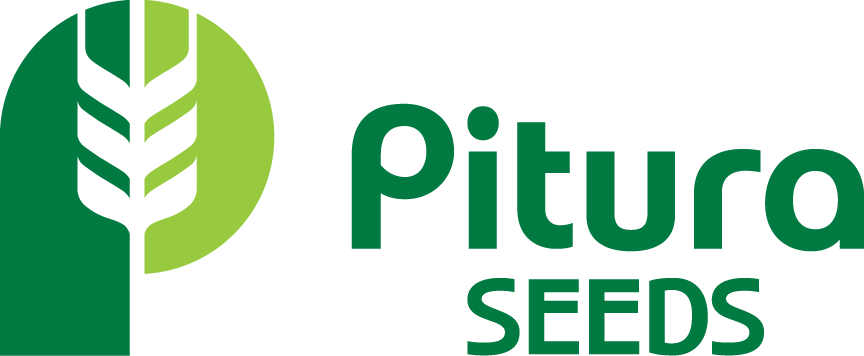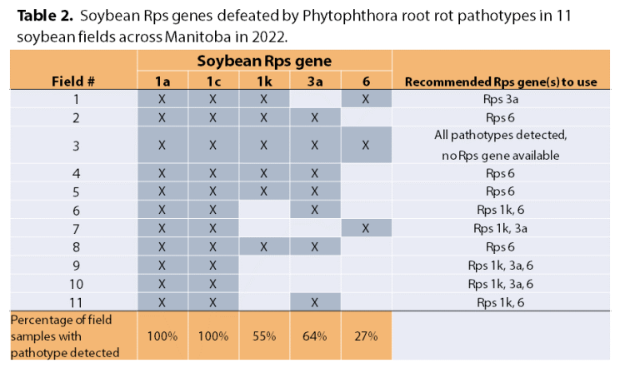Phytophthora Root Rot
Phytophthora Root Rot (PRR) is a soybean disease that can cause losses at all growth stages if the environmental conditions are right. Thriving when soils are heavy, compacted and saturated, the Red River Valley is a prime candidate for this disease. While most of our growing season was dry this year, we did see an increase in PRR after one good rain shower, particularly in one field. So, what would have caused an increase in PRR on that field on the farm?
First, let’s consider crop rotation. We grew soybeans here in 2013, 2017, 2021 and 2023. The PRR pathogen can remain in the soil for at least 4 years. As soybeans are the only host for PRR, the best crop rotation to protect against it would be soybeans every 4 years, at the max. You can see that with only 2 years between this year and our last soybean crop, more time should have been given in-between to reduce the buildup of pathogens in the soil.
Secondly, we need to consider the major resistance genes in our varieties. In the past 10 years, every soybean variety that we’ve grown on that field has had either the 1c gene, or a combination of 1c and 3a. There are currently 5 genes available in Manitoba to protect against PRR. Most soybean varieties in Manitoba will have either have 1 of these genes or a combination of a couple. In 2022 Manitoba Pulse and Soybean Growers did a survey of the PRR pathogens in 11 fields across Manitoba, looking particularly at gene resistance within those pathogens. If you look at the chart below, you can see that within those fields both the 1a and 1c genes were 100% ineffective, meaning they provided no control against PRR in that field. Based on our variety rotation, I suspect that our field is also resistant to both the 1c and 3a gene.
Manitoba Pule and Soybean Growers, 2022
So, if our fields are overcoming these resistance genes, what does that leave us with? The answer is field tolerance. Unlike resistance, this simply refers to how well the plant is able to grow through the disease. As the breakdown of pathogen specific genes tolerance is going to become more and more important. One thing to note is that there is no regulated scale for these ratings. Each company will have their own definition of field tolerance. The varieties on our field this year ranged in field tolerance, with ‘average’, ‘good’, and ‘moderately tolerant’.
All of this goes to say: have you considered the right variety for the right field? As we reflect on the year, we can say that the varieties we grew on this field were probably not best suited. Growing something with a different resistance gene, such as Badger with a 1k gene, or a variety with a higher field tolerance, may have helped to reduce overall PRR infection this year, and reduce pressure for following years.
As you begin to plan varieties and crop rotations for 2024, consider these things:
- Have I noticed phytophthora in my fields?
- What PRR resistance genes have I grown there in the past?
- Does the variety have a good field tolerance rating?
For more information:
2022 Disease Prevalence and Management Tools – Manitoba Pulse & Soybean Growers
Phytophthora Root Rot – Manitoba Pulse & Soybean Growers
~Beth Ens

